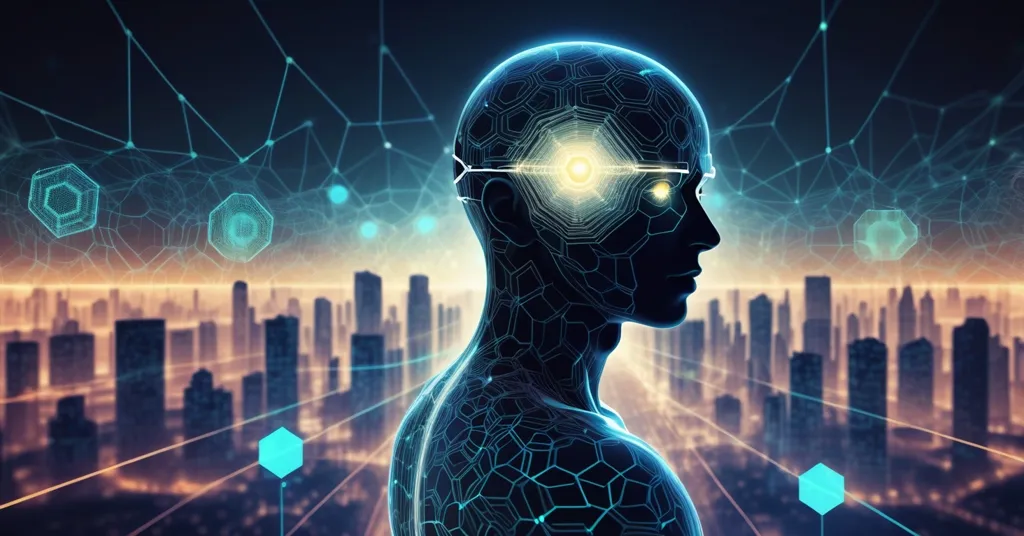Neuralink’s Smart Bionic Eye Trial: Vision Restoration or Musk Hype with Spain and UCSB?

Neuralink’s Smart Bionic Eye: A Visionary Gamble with Spain and California
Elon Musk’s Neuralink is making waves once more, this time with a daring “Smart Bionic Eye” project that promises to restore sight to the blind. By partnering with researchers in Spain and the University of California at Santa Barbara (UCSB), Neuralink is kicking off clinical trials that merge brain-computer interface (BCI) technology with artificial intelligence. The goal? To let the visually impaired recognize faces, navigate the world, and read through a digital system wired straight into the brain. It’s a hell of a dream—but let’s not get blinded by the hype just yet. The road from lab to life-changing tech is paved with regulatory traps, ethical quagmires, and Musk’s notorious habit of missing deadlines.
- Neuralink joins forces with Spain and UCSB for a Smart Bionic Eye trial to restore vision using BCI and AI.
- Trial listed on ClinicalTrials.gov, but no Neuralink patients are involved yet; it’s early days.
- Big promises face bigger hurdles—FDA roadblocks, ethical dilemmas, and Musk’s timeline woes.
Unpacking Neuralink: Brain Tech for Dummies
If you’re new to this, Neuralink is Elon Musk’s brain-tech outfit, hell-bent on building tiny chips that link human brains directly to machines. Picture this: your thoughts controlling a computer, moving a robotic arm, or even “seeing” through a bionic eye. It’s about solving massive medical challenges like blindness or paralysis by letting the brain “talk” to devices. Founded in 2016, Neuralink has grabbed headlines with sci-fi promises, but their track record so far? A mixed bag. Fewer than 10 humans have received their implants, mostly paralyzed folks using them for basic tasks like web browsing or gaming. Vision restoration? Not even close yet. And let’s not forget the controversies—animal testing allegations have dogged them, raising eyebrows about ethics and safety. For a deeper dive into the company’s background, check out the Neuralink overview on Wikipedia.
The Smart Bionic Eye Trial: What We Know
Diving into the specifics, this Smart Bionic Eye project is a clinical trial listed on ClinicalTrials.gov in late July 2025 under UCSB’s sponsorship. The aim is to develop a system that uses BCI tech—essentially, a chip in your brain—and AI to translate visual data into something a blind person can “see.” Think of it as a digital eyeball wired to your noggin, potentially letting users spot a friend’s face, dodge obstacles outdoors, or read a book. Sounds revolutionary, right? But hold off on the champagne. The trial is in its infancy—enrollment is by invitation only, and no Neuralink patients are confirmed to be part of it yet. The company’s exact role alongside Spanish researchers and UCSB isn’t crystal clear either. Are they leading the charge, or just tagging along for the PR bump? We don’t know. For more on this collaboration, see the latest report on Neuralink’s partnerships with Spain and California.
Why Spain and UCSB, you ask? Public data doesn’t spill the beans, but it’s likely tied to progressive healthcare research environments or specialized expertise in neuroscience. Spain has been a hub for cutting-edge medical studies, and UCSB boasts a strong track record in tech-driven health solutions. Still, without hard details, we’re just connecting dots. What’s clear is that this trial is more of a concept than a concrete step forward for now—promising, but speculative as hell. Specifics on the trial setup can be found in this update about the UCSB and Spain clinical study.
Neuralink’s Bigger Picture: Chips, Dreams, and Dollar Signs
This bionic eye isn’t Neuralink’s only play. It’s part of a broader lineup of brain gadgets they’re cooking up. There’s Blindsight, a chip specifically for vision restoration, so far tested only on monkeys. Neuralink’s betting big on it, targeting a human rollout by 2030 and projecting a staggering $1 billion in yearly revenue by 2031 from 10,000 surgeries at $50,000 each. Then you’ve got Telepathy, a system to let people control devices—like typing or gaming—just by thinking, aiming for U.S. approval by 2029 with $100 million in annual revenue. And don’t forget Deep, a device to tackle neurological issues like Parkinson’s tremors. Their master plan? Build five massive clinics by 2031 to churn out 20,000 brain surgeries a year. With $1.3 billion already raised from investors and a $9 billion valuation according to PitchBook, Neuralink’s got the cash and the clout to dream big. Track their latest developments on the official Neuralink blog for Blindsight progress.
But let’s talk impact over numbers. If Blindsight or the Smart Bionic Eye works, we’re not just discussing revenue—we’re talking about giving sight back to millions. Imagine a blind person seeing their child’s face for the first time, or navigating a city without a cane. That’s the kind of disruption we root for, the kind that flips the status quo on its head. Yet, with Neuralink’s human trials still in single digits and none touching vision, these are pipe dreams until proven otherwise. Stay updated on their ongoing vision restoration clinical efforts.
Roadblocks: FDA, Ethics, and Musk’s Time-Bending Promises
Here’s where we slam on the brakes. Neuralink’s got fewer than 10 human implants under their belt, all for paralyzed patients doing basic digital tasks—not a single one for vision or Parkinson’s. Scaling from monkey tests to human miracles by 2030? That’s a long shot. The regulatory landscape is a damn jungle. The U.S. Food and Drug Administration (FDA) hasn’t given permanent approval to any BCI tech—not Neuralink’s, not anyone’s. Getting there means clearing brutal multi-phase clinical trials to prove safety and effectiveness. Past FDA pushback on Neuralink, including concerns over device migration risks and sketchy animal testing practices reported in 2022-2023, shows this ain’t a cakewalk. We’re talking years, maybe decades, of red tape. For broader context on these challenges, explore this collection of BCI technology research and hurdles.
Then there’s Elon Musk himself. The man’s a visionary, no doubt, but his timelines are often more fiction than fact. Remember Tesla’s self-driving cars? Promised to be fully autonomous within three years back in 2015, yet Robotaxi testing only kicked off in 2025—nearly a decade late. If history’s any guide, Neuralink’s 2030 targets might just be 2040 in Musk-speak. Hell, we’ve got to call it like we see it: overpromising is his brand, and it’s burned trust before. The ethical debates surrounding Musk’s approach are unpacked in this detailed piece on Neuralink’s moral challenges.
Ethics add another layer of muck. If this tech delivers “superhuman vision,” as Musk has teased, who gets it? Will it be a toy for the ultra-rich, creating a cyborg divide while the average Joe’s left in the dark? And what about brain data—your most personal info—being mishandled or monetized? Plus, societal impacts: how do you regulate tech that could literally rewire humanity? Governments might clamp down, or worse, exploit it. These aren’t just tech puzzles; they’re human ones, echoing the same freedom and privacy battles we fight in the crypto space.
Let’s not ignore the competition either. Companies like Synchron have already implanted BCI devices in humans under FDA exemptions as early as 2022, focusing on paralysis applications. They’ve got a head start, even if their tech isn’t as flashy or ambitious as Neuralink’s. Blackrock Neurotech is in the game too, with early human trials. Neuralink’s $9 billion valuation looks juicy, but is it backed by progress, or just Musk’s hype machine? That’s the million-dollar question.
Blockchain and Crypto: A Neuralink Lifeline?
Now, let’s pivot to where our world of decentralization smashes into Neuralink’s orbit. One of the nastiest risks with brain-computer tech isn’t failure—it’s privacy. Your brain signals, the literal blueprint of your thoughts and senses, are a goldmine for hackers or corpos if they’re not locked down. This is where blockchain could be a game-changer. A decentralized, encrypted ledger—think Bitcoin or Ethereum—could store this data so securely that even Big Tech can’t sniff it. Picture every Neuralink patient owning their brain data like a Bitcoin wallet: immutable, private, fully under their control. It’s the freedom we’ve been screaming about since Satoshi’s whitepaper dropped. Community discussions around these innovations can be found in this Reddit thread on Neuralink’s recent advancements.
Funding’s another angle. Neuralink’s chasing billion-dollar dreams, and while they’ve got $1.3 billion from traditional investors, why not go decentralized? Crypto tokenization—think ICOs or DAOs—could let regular folks fund brain tech breakthroughs, cutting out Wall Street middlemen. Ethereum’s smart contracts have already powered crowdfunding for wild ideas; imagine them automating consent for brain data sharing or handling payments for Neuralink’s $50,000 surgeries. Hell, why not pay in Bitcoin itself, leveraging its global, borderless nature for access anywhere? It’s a perfect nod to our maximalist streak while recognizing altcoins like Ethereum fill niches Bitcoin doesn’t touch.
Of course, there’s a dark side. Crypto scams could prey on desperate patients hoping for a cure, and regulatory crackdowns on tokens are a real bitch. But the potential synergy—brain tech meeting decentralization—mirrors Bitcoin’s early days: wild, doubted, but world-changing if it sticks the landing. Could a Bitcoin-inspired model secure brain data better than any centralized server? Damn right it could. And if Neuralink’s mission aligns with our push for privacy and autonomy, we’re all for accelerating that future, flaws and all.
Looking Ahead: Breakthrough or Bust?
Stepping back, Neuralink’s Smart Bionic Eye trial with Spain and UCSB is a ballsy move. If it works, even a few years late, it could redefine what overcoming disability means—much like Bitcoin redefined money. It’s disruption we can get behind, a middle finger to the status quo. But the gap between dream and reality is a chasm. FDA hurdles, ethical messes, and Musk’s time-bending optimism cast long shadows over that 2030 horizon. Add in the societal risks of brain tech widening inequality, and you’ve got a project as polarizing as it is promising.
On the flip side, if blockchain and crypto can bolster privacy or funding for BCI, we might witness a fusion as revolutionary as the first Satoshi transaction. Neuralink’s next steps—whether a leap forward or a faceplant—will be a spectacle. We’ll be watching, ready to cheer the wins or roast the flops with no bullshit spared. Because if there’s one thing we believe in, it’s pushing boundaries, whether through brain chips or decentralized ledgers. This ride’s just getting started.
Key Questions and Takeaways
- What is Neuralink’s Smart Bionic Eye project all about?
It’s a clinical trial with Spain and UCSB to create a BCI and AI-driven system that restores vision for the blind, aiming for skills like face recognition and reading. - How far has Neuralink come with human testing for vision?
Nowhere close—fewer than 10 humans have implants, none for vision, and the bionic eye trial hasn’t involved Neuralink patients yet. - Are Neuralink’s 2030 goals realistic with Elon Musk at the helm?
Unlikely; Musk’s history of delays with Tesla suggests Neuralink’s targets for Blindsight and beyond could slip by years. - What regulatory challenges are in Neuralink’s way?
The FDA hasn’t approved any BCI for permanent human use, and Neuralink’s safety and efficacy data face intense scrutiny, likely slowing progress. - How could blockchain or crypto mesh with Neuralink’s mission?
Blockchain could secure sensitive brain data with Bitcoin-like privacy, while crypto tokenization might fund projects, aligning with decentralization’s ethos. - What societal risks does brain tech bring alongside benefits?
It risks creating inequality if only the wealthy access “superhuman” enhancements, plus privacy threats if brain data isn’t protected—issues crypto could help solve.



